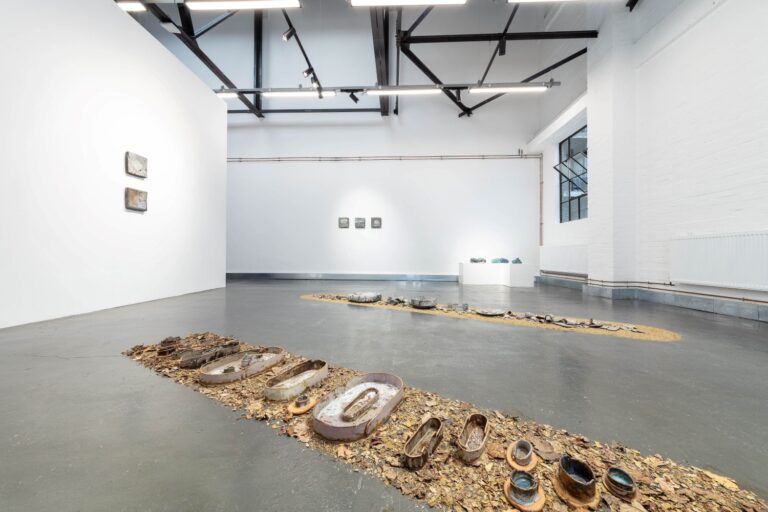Two artists from Europe and South America, Marta Jakobovits and Anderson Borba, are showcasing their experimental practices in a new exhibition at Elizabeth Xi Bauer Gallery. The duo’s works delve into the exploration of materiality, where both artists engage in processes that involve experimentation, reworking techniques, and forging new visual languages through their chosen mediums—clay and wood.
The exhibition offers a compelling dialogue between Jakobovits, a ceramic artist, and Borba, a sculptor working with industrial-grade wood. Despite their differing backgrounds, the artists share a profound commitment to using their hands as their primary tool, which curator Maria do Carmo M. P. de Pontes believes connects their works on a deeper level. “There is a powerful artistic dialogue between Anderson Borba and Marta Jakobovits’ practices, which have more in common than what may be visible at first glance,” she explained.
Jakobovits, known for her intricate use of ceramics, blends casting, modelling, firing, and glazing to craft complex sculptures. She has built an extensive understanding of how different chemicals and processes affect the materials she uses, allowing her to experiment with shape, texture, and colour. Her installations in this exhibition will continue her exploration of natural forms, drawing inspiration from elements like stones, leaves, and tree bark. This work is highly meditative, combining her personal experiences with broader societal and environmental concerns.
“My work is a personal approach to making the invisible of the conscious and subconscious psyche visible,” Jakobovits said. “It is an intuitive dialogue between me and what is outside of me.” Her ceramics often carry a tactile connection to nature, evoking memories and emotions that invite the viewer into a deeper understanding of the material world.
Meanwhile, Anderson Borba’s practice centres around wood and found materials. Using a combination of carving, collaging, and burning, Borba explores the physicality and possibilities of wood to create free-standing totem-like sculptures and wall reliefs. His process, which integrates oils, varnishes, and colour stains, is informed by both the craft traditions of Brazil and his time spent working in London. This blend of cultural influences shapes his distinct approach to materiality.
Borba’s work is often politically charged, addressing societal and environmental issues such as the impact of plastic on natural resources. Through fragmented assemblages and textural surfaces, he mimics nature—often using found objects such as shells and rocks—while also commenting on the exploitation of the environment.
The exhibition highlights Borba’s evolving techniques, featuring tactile reliefs, anthropomorphic totem sculptures, and raw, untreated surfaces. His works are immersive, inviting the viewer to engage with them from different angles and perspectives. The sculptures, with their irregular joints and complex forms, challenge conventional notions of coherence and unity, offering a dynamic interplay of abstract, detailed, and seductive textures.
This exhibition offers an exciting opportunity to witness the creative tension and synergy between two artists whose practices, though distinct, share a common thread of hands-on craftsmanship and material exploration. The works of Jakobovits and Borba are available to view at Elizabeth Xi Bauer Gallery, where they will remain on display for a limited time.


